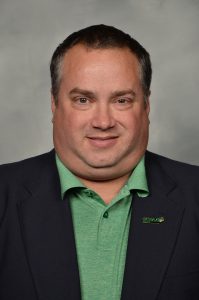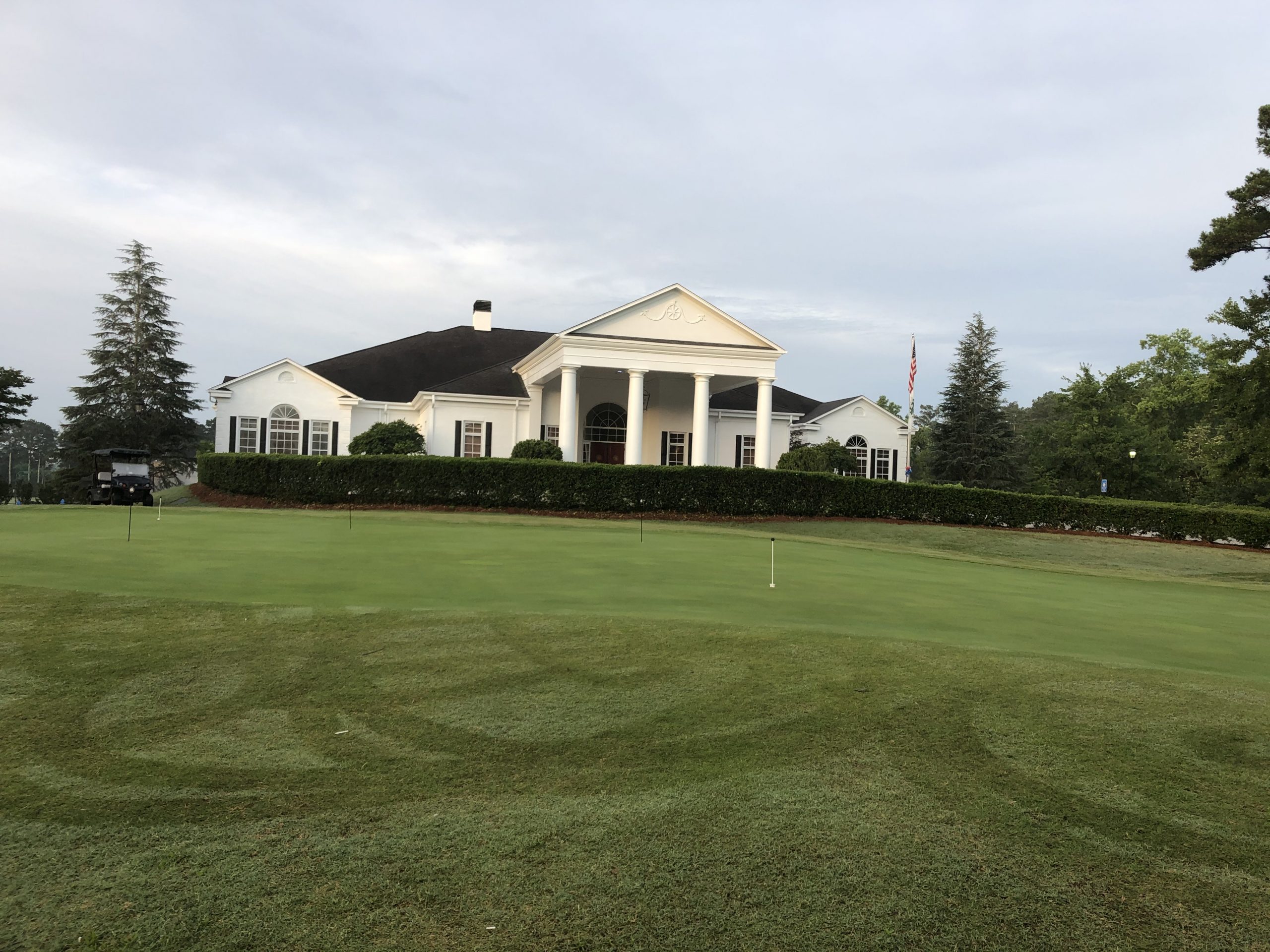Recording Turf Data: Saving Money and Instilling Confidence with Spiio Sensors
Adam Hoffman, superintendent of Sunset Hills Country Club in Carrolton, Georgia, is a major proponent of diligently recording turf data. Spiio has been a valuable tool for him in this effort. In addition to being impressed by superb customer service, he’s quickly noticed the sensors’ value in turf data comparison.
In his 27 years in the turfgrass industry, (6 as superintendent), Adam Hoffman says the field has changed a lot. “When I got in,” he says, “it was during the Tiger Woods boom. The money was flowing, and courses were being built everywhere. Now, everything’s closing down, getting cheaper, getting more streamlined. Courses have got to do more with less—especially in a small-town country club like this. Things are at a premium financially.” That budgetary shift is just one issue golf course superintendents face. Recording turf data using Spiio sensors can help alleviate financial strain.
Adam Hoffman was actually a graphic design major in college. On the side, he was still working his high school job at a golf course in Johnson, Tennessee. Like many turfgrass professionals, he eventually realized he enjoyed working on the course more than what he did in class. So, he transferred to the University of Tennessee to study Ornamental Horticulture with a concentration in Turfgrass Management. He’s now worked on several courses. In 2005 he and his family left Tennessee, his home state, to follow his wife’s teaching job to Georgia. His current professional home is Sunset Hills Country Club in Carrolton, GA.
Saving Money with Spiio Sensors
Sunset Hills CC installed two new Spiio sensors last June. Hoffman is really seeing the potential financial value: “I’ve used the sensor data quite a bit to time free-emergent herbicide applications. If you put those applications out either too soon or too late, you’re wasting money. You spend on the initial application, plus the cost of the post-emergent application you’ll have to put out later. Because of that, I’ve been trying to fine-tune the timing.” Recording turf data (like soil temperature) with Spiio sensors can help courses better time these applications and save money.
“I’ve used the sensor data quite a bit to time pre-emergent herbicide applications. If you put those applications out either too soon or too late, you’re wasting money—money for the initial application, plus money for the post-emergent application you’ll have to put out later. Because of that, I’ve been trying to fine-tune the timing.”
Adam Hoffman

“We’re fortunate in Georgia that we don’t have to buy water, like places out West. But we still have to pay to pump it, so obviously it’s a resource we don’t want to waste.”
Another way Spiio helps courses save money is water conservation. “We’re fortunate in Georgia that we don’t have to buy water, like places out West. But we still have to pay to pump it, so obviously it’s a resource we don’t want to waste.” Precise soil moisture data allows Sunset Hills to save money (and help the environment) by reducing the risk of over-watering.
Customer Service at Spiio: It’s More than Just the Product

But it’s not just the value that the sensors themselves bring. Hoffman has been extremely impressed with the service he’s received from Spiio as a company. “The customer service has been mind-blowingly awesome,” he says. “They’ve always been willing to work with me. Of course, there have been a few problems and bumps in the road, but they’ve been on top of it. They’ll ask, ‘What can we do to make it right?’ They’ll send replacement units; as well as check-in with a call or a text. Even when I’ve had some requests that might seem unreasonable, they’ve gone out of their way to make it work. It’s rare to find customer service like that in any business, especially this one.” One example of this kind of personalized customer service was helping Hoffman’s efforts in recording turf data.
Spiio made sure the data from the sensors worked directly with the spreadsheets Hoffman was already using. Keeping track of and recording turf data has always been very important to Hoffman. He’s been building off the work of other turfgrass professionals who have shared spreadsheets online. At Sunset Hills, they log temperatures, rainfall, and evapotranspiration on a regular basis. “Sometimes, honestly, it turns out to be pointless. But some days, I’m able to go back and say, ‘Oh, we’re starting to see a spike in X. We need a new growth regulator application.’ Or it might be, ‘Moisture is going down, we’re not going to see as much growth.’”
“The customer service has been mind-blowingly awesome,” he says. “They’ve always been willing to work with me. Of course, there have been a few problems and bumps in the road, but they’ve been on top of it. They’ll ask, ‘What can we do to make it right?’ They’ll send replacement units, they’ll check in with a call or a text, and even when I’ve had some requests that might seem unreasonable, they’ve gone out of their way to make it work. It’s rare to find customer service like that in any business, especially this one.”
Adam Hoffman
The Importance of Recording Turf Data
Hoffman really advocates recording turf data consistently. He often advises, “It costs almost no effort. And you never know when you’re going to use it until you need it.” He also jokes, “At least it impresses people.” The Spiio sensor makes it that much easier to record accurate data, and adds a new element: “Because it’s there in the ground, you’re always getting info—rather than just momentary snapshots from going out with probes. With the sensor, I can get a fuller picture of what’s going on in the course. When I look at the data, I can see almost a heartbeat, a rhythm, in the grass. The numbers move up and down throughout the day.” Seeing this daily fluctuation opens possibilities for turf data comparison between different times of the day. This includes times of day Hoffman usually wouldn’t get much insight into.
Though he’s already noticed benefits, Hoffman looks forward to having Spiio data that spans multiple seasons. Right now, he’s able to give reports to board members on a monthly basis. Those data-driven reports instill confidence in general managers, board directors, and other stakeholders. They know the superintendent is on top of things and knows what’s going on out on the course. As he continues recording turf data with Spiio, Hoffman is excited to eventually have multiple years of records. He’ll be able to say, for instance, “Here’s what we had last October, and here’s what’s happening this year.” Turf data comparison across years would yield insights beyond what he’s got so far.
Experimenting with Sensors & Recording Turf Data
Sunset Hills is also open to expanding their use of Spiio sensors. “We put one on our wettest green and one on our driest green for now. We’re on a limited budget,” says Hoffman. “I’d love to possibly add more later. But in the meantime, there’s also a ton of flexibility; I can move the sensors as needed to check other areas.” That means he can utilize turf data comparison between different areas of his course.
“We put one on our wettest green and one on our driest green for now. We’re on a limited budget,” says Hoffman. “I’d love to possibly add more later. But in the meantime, there’s also a ton of flexibility; I can move the sensors as needed to check other areas.”
Adam Hoffman
As a long-time advocate of consistently recording turf data, Hoffman frequently tells people, “You think you’ll remember, but you won’t. Write it down.” With Spiio, someone is always “writing it down.”

